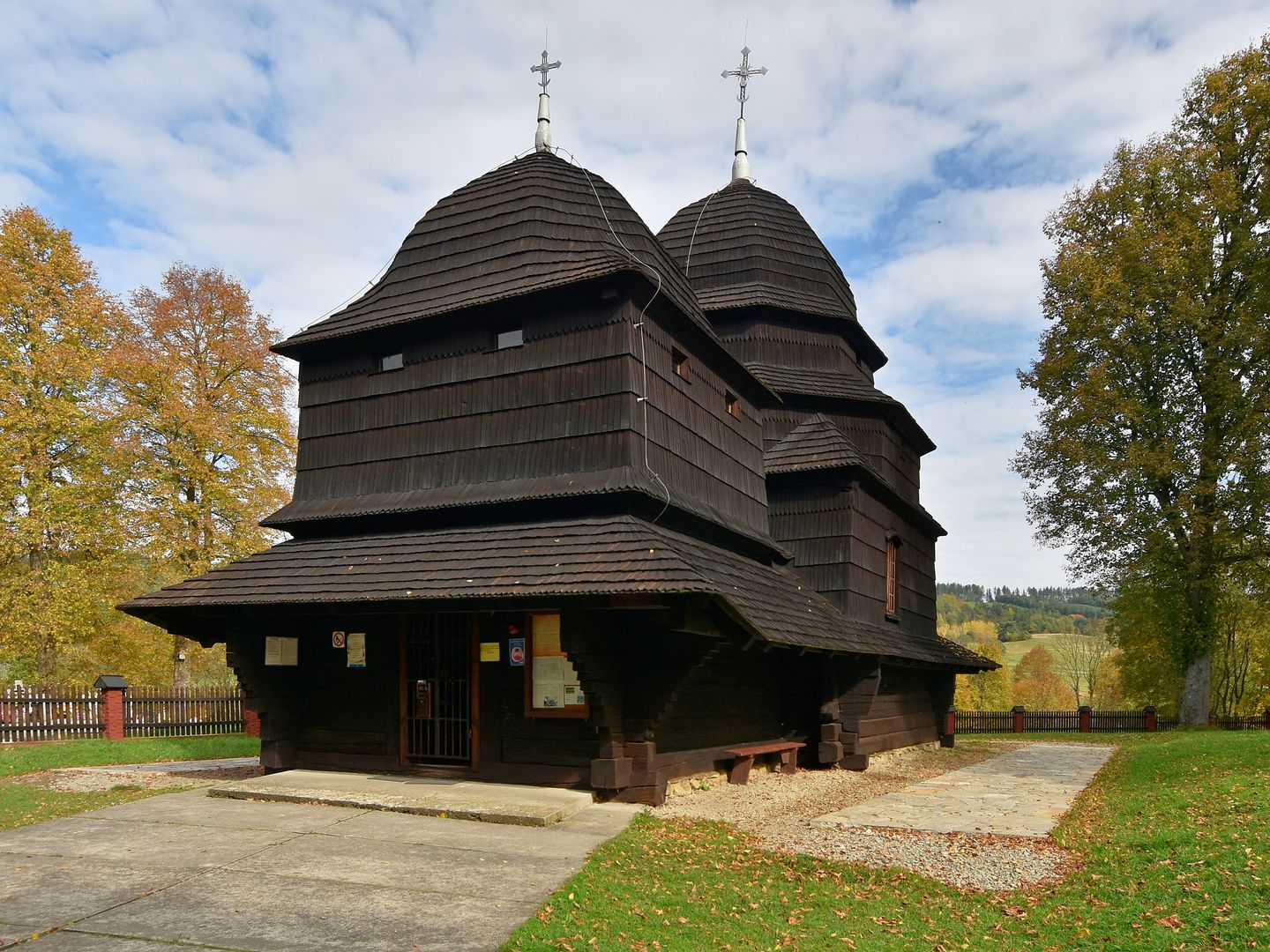Church of the Protection of the Mother of God in Równia
6.75

Overview
The Church of the Protection of the Mother of God in Równa is a former Greek Catholic temple, built in the Boiko style in the second half of the 18th century. The structure is tripartite in form, distinguished by a tall and wide nave, and its characteristic spherical domes vary in size, giving it a unique appearance. The church's windows are rectangular, and the wrought-iron crosses atop the domes emphasize its sacred character. The church was listed as a historical monument in 1960 and is part of the Subcarpathian Wooden Architecture Trail. The history of the building is complex; it served as a Greek Catholic temple until 1951, when the Ukrainian inhabitants of the village were displaced. After their departure, the building fell into neglect and was used as a storage facility. Despite this, many elements of its interior remained in good condition. In the 1960s, valuable artifacts from the church, such as a 17th-century iconostasis and 18th-century icons, were transferred to the museum in Łańcut. In 1969, despite lacking administrative approval, local Roman Catholic faithful began adapting the temple, which was officially handed over to the Latin Church only three years later. Interestingly, despite the transformations the church has undergone, its architectural values and partial furnishings have been preserved, making it not only a place of worship but also a witness to the rich history of the region.
Location
2025 Wizytor | All Rights Reserved